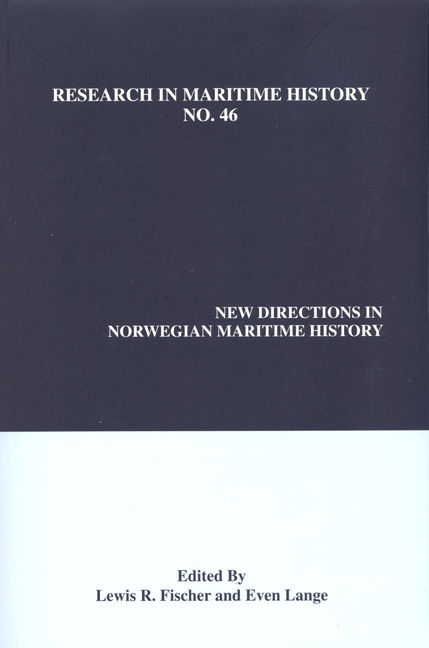Book contents
- Frontmatter
- Contents
- About the Editors
- Contributors' Notes
- Introduction
- Global Integration
- Political Issues
- “In a Peculiar Position: Merchant Seamen in Norwegian Health Policy, 1890-1940”
- “The Norwegian-American Line: State Incentives and Mediations with Dominant Market Players”
- “After the Boom: The Political Economy of Shipping in Norway in the Interwar Period”
- Success and Failure
“After the Boom: The Political Economy of Shipping in Norway in the Interwar Period”
from Political Issues
- Frontmatter
- Contents
- About the Editors
- Contributors' Notes
- Introduction
- Global Integration
- Political Issues
- “In a Peculiar Position: Merchant Seamen in Norwegian Health Policy, 1890-1940”
- “The Norwegian-American Line: State Incentives and Mediations with Dominant Market Players”
- “After the Boom: The Political Economy of Shipping in Norway in the Interwar Period”
- Success and Failure
Summary
The outbreak of hostilities in August 1914 marked the beginning of a spectacular boom-and-bust period for international shipping. Extraordinary levels of demand, coupled with shortages of shipping tonnage, caused freight rates to increase eleven-fold. Moreover, vessel prices rose markedly as investors sought to reap the benefits of the boom. Controlling the world's fifth largest fleet, Norwegian shipowners earned windfall profits. The downturn, however, was equally sharp. By June 1920, freight rates had halved from their wartime peak, and vessel prices had fallen dramatically. Having rushed to replace lost vessels at high prices during the postwar boom, shipowners found that their fortunes had altered dramatically. By June 1921, around 500 Norwegian vessels, representing around 1,314,000 deadweight tons (dwt), were laid up, and these high rates of unemployment became a consistent feature of the interwar period.
The boom and bust in the shipping sector posed extreme challenges for Norwegian policymakers who, in attempting to control the investors in shipping shares, introduced wide-ranging legislation and increased the tax rate for shipping companies considerably. These efforts, however, were insufficient, as expanding shipping earnings drove a speculative frenzy among speculators and the general public. Cleaning up after this boom, so to speak, proved to be a challenge. Losses in shipping permeated the financial sector, and traditional shipping banks found that the value of collateral, such as shipping shares and vessels, had been decimated. As a result, almost all the leading shipping banks were either forced to cease operations or suspend lending. The shortfall in export earnings from shipping and other sectors also aggravated the current account deficit and diminished the value of the Norwegian currency. Attempting to bring the krone back to its prewar parity, the Norwegian Central Bank [Norges Bank] introduced deflationary policies from the mid-1920s that greatly aggravated the economic difficulties, resulting in low aggregate growth throughout the decade.
It is surprising, to say the least, that the boom during World War I, and the subsequent financial crisis in the 1920s, would set the stage for a largescale expansion and technological modernization of the Norwegian merchant fleet. From 1923 to 1938, the Norwegian fleet experienced the most rapid growth (4.5 percent per annum) among the world's leading shipping nations. As a result, the Norwegian share of world tonnage doubled.
- Type
- Chapter
- Information
- New Directions in Norwegian Maritime History , pp. 125 - 150Publisher: Liverpool University PressPrint publication year: 2011



